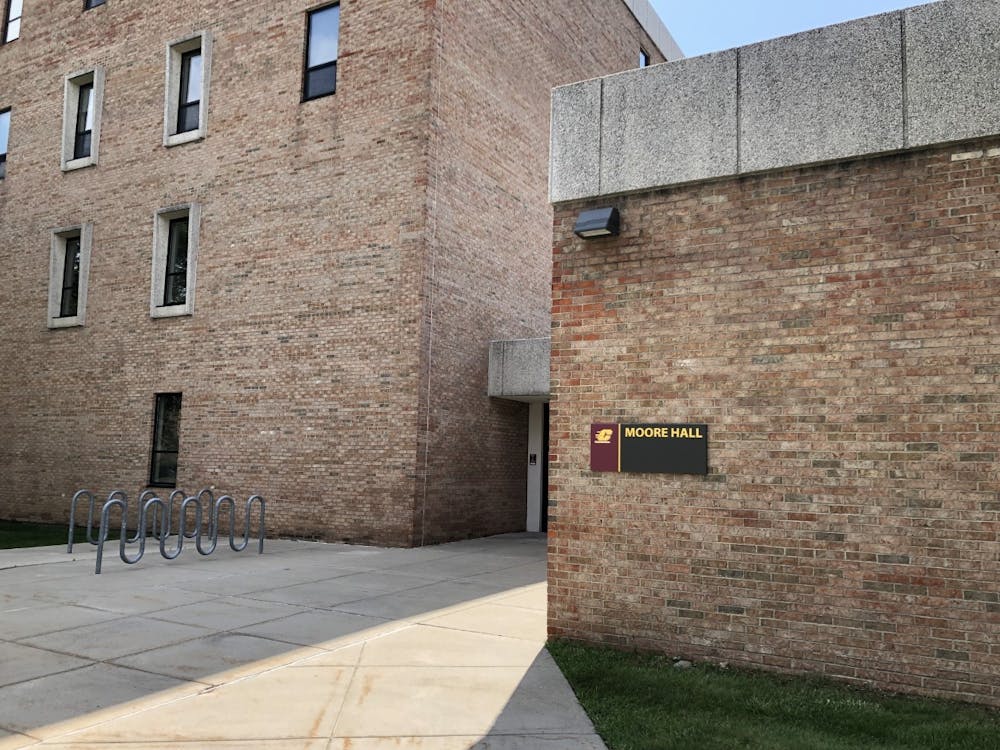Two week period to object department merge ends Nov. 29
During the academic senate meeting Nov. 15, a two week period was given for any dean or provost in the university to object the department merges within the College of Arts and Media, which ends Nov. 29.
On Nov. 15, Jefferson Campbell, the dean of the College of Arts and Media, announced plans to merge the communication, broadcast and cinematic arts, and journalism departments under one department. This is one of several department mergers occurring at Central Michigan University.
If there are any objections by Nov. 29, it would prevent the passage of the change until it can be re-evaluated by a committee.
The merge has brought mixed feelings across the departments being affected. According to Carol McGinnis, a faculty member in the journalism department said she along with other faculty are concerned about identity loss with the merge.
Whereas, Chairperson of Communications and Professor Edward Hinck said the merge will bring more opportunities for collaboration.
“I'm sure we'll run into some challenges,” said Hinck. “I feel positive about the energy and the excitement and the commitment to looking for new opportunities to collaborate.”
Amanda Garrison the President of the Faculty Association said in an email that no union issues have been brought to the Faculty Associations attention, however, this does not mean that there are none. She said that the union is "always concerned" with the working conditions of its members.
"Merging departments takes a lot of work: re-writing bylaws, establishing the chair, working over other departmental pieces that must come together – most all of this work is done by faculty and staff," Garrison said. "When there are fewer faculty to do this work, because we have lost faculty who have not been replaced, which increases our workloads at many levels, those faculty already doing their diligence with regard to the expectations of their existing work: teaching, scholarship, and service (to department, college, university, and community), must do more."
Garrison clarified in her email that this "more" is not considered "extra" work to be compensated, therefore faculty are not receiving payment for the new "extra" tasks at hand.
Garrison said that often the only choices available when it comes to cost saving measurements is to merge or to cut in other places. Merges have a variety of reasoning for being implemented, Garrison said. Nevertheless, mergers are meant to be cost-savings -- to eliminate budgets between departments coming together.
Therefore, if two departments merge, one budget goes away, she said.
"There is not more money for a bigger departments – at least in the College of Liberal Arts and Social Sciences (CLASS), but a reduction of resources for more people," Garrison said. "It must be recognized that the work required to successfully and seamlessly (as much as possible) merge departments is extra work for faculty and staff, coming together – with less return…except that we get to continue our existence as faculty, as professors, to serve our students. These are not decisions made by faculty and staff out of nowhere, but, at least in the case of CLASS mergers, "do-or-die" solutions to plummeting resources for affected colleges."
Furthermore, Garrison mentioned that faculty not protected by tenure, fixed-term faculty, are affected by mergers because they are the first to be let go when the budget has to be stretched further. Additionally, the monies that colleges receive are based on the number of students majoring and minoring in those faculty programs, she said.
"Mergers are sometimes proposed as a way to “save” fixed-term faculty jobs," Garrison said. "The risk is, of course, that even if fixed-term jobs are saved by mergers, if student credit hours are declining, the available money for fixed-term faculty positions is less as well. The result, in the end, is the same: fixed-term faculty layoffs."







